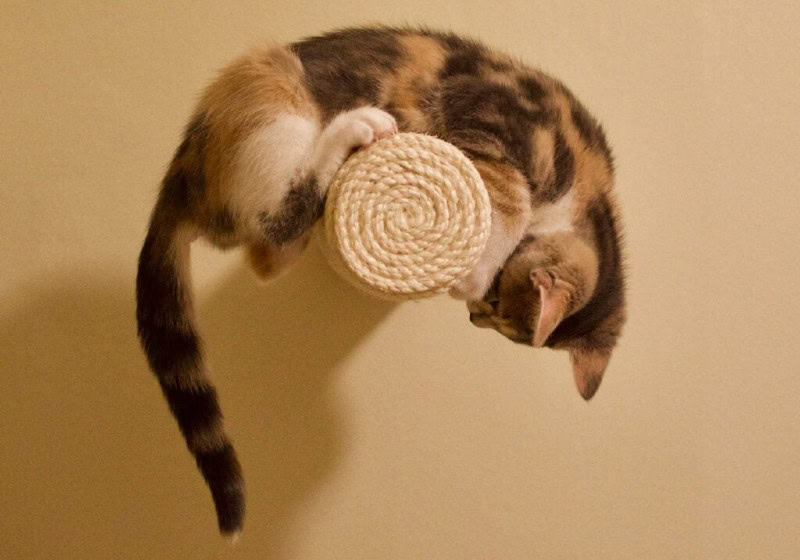VET APPROVED

The information is current and up-to-date in accordance with the latest veterinarian research.
Learn more »Click to Skip Ahead
While we often think about dogs chasing their tail, that same stereotype doesn’t apply to cats. So, when a cat starts chasing or playing with their tail, it can raise a couple of eyebrows.
Is it normal for a cat to play with their tail, and if it isn’t, what could it mean? It all depends on the situation, and here, we help you figure out if your cat is simply having fun or if there is a deeper issue going on.
Keep reading as we break down everything that you need to know about a cat that won’t stop playing with their tail!

The 5 Reasons Why Your Cat Might Chase Their Tail
Before you can figure out what you should do and if it’s normal, you need to figure out why your cat is chasing their tail in the first place. Here are five of the most common reasons that your cat might chase their tail.
1. Entertainment
Sometimes your cat is simply chasing and playing with their tail because it’s fun. If this is the case with your cat, they’ve likely played with their tail since they were a kitten.
It’s possible for an older cat to suddenly start playing with their tail when they haven’t before, but it’s unlikely.
2. Fleas
Fleas itch and bite, and this will cause irritation on your cat’s skin. Your cat will lick and chew themselves to try and get them off. If the fleas are on their tail or the base of it, this is where they’ll focus their attention. While cats can reach all different portions of their body, their tail is one of the easiest for them to access.
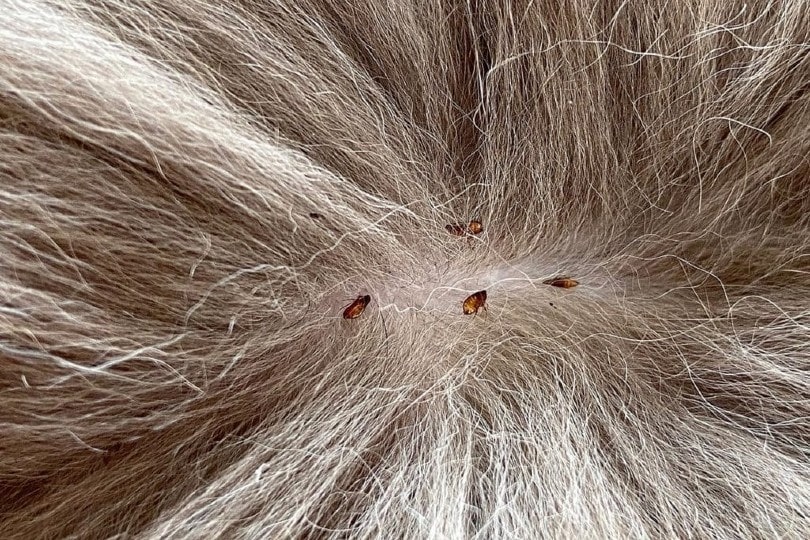
3. Infection
If you take a closer look at your cat’s tail and notice redness, scabs, odor, bald patches, or other signs of skin irritation, there’s a decent chance that there’s an infection that you need to take care of. Unless you already have the medication on hand and know what you’re doing, it’s best to get in touch with a veterinarian for guidance.
4. Allergies
As the weather changes, so can your cat’s allergies. They might be perfectly fine for a particular season, but for others, they may show signs of atopic dermatitis, such as generalized itchiness, itchy ears, hair loss, crusting, or granuloma complex lesions. If your cat has recently started going after their tail, consider taking them to the vet to check for allergies and get the appropriate treatment.
5. Stud Tail
This condition, technically called tail gland hyperplasia, is more common in dogs but can also occur in cats. It involves enlargement of the sebaceous (oil) glands at the base of your cat’s tails and is primarily seen in unneutered male cats, as its occurrence is linked to androgen sex hormones. It appears as an area of hair loss and greasy skin at the base of the tail and can cause itchiness, leading your cat to chase their tail.
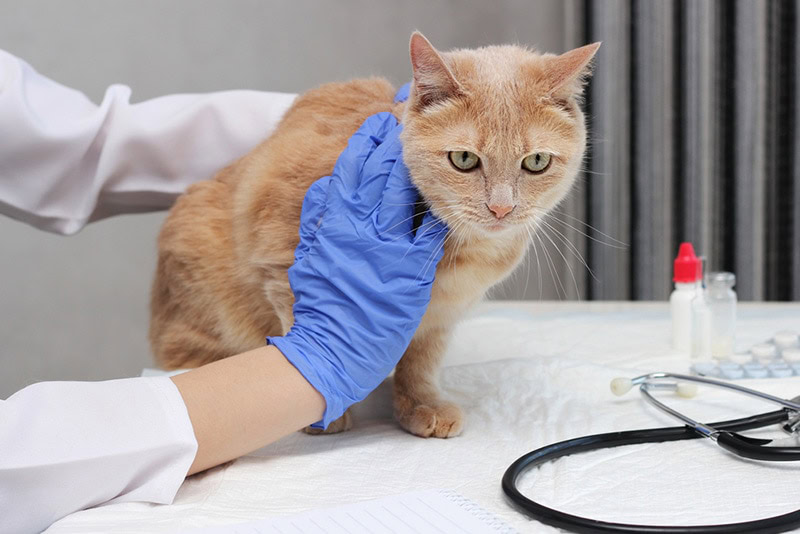

When Is It Normal for a Cat to Play With Their Tail?
There’s usually nothing wrong with your cat when they’re playing with their tail and there’s nothing that you need to do. This is especially true if your cat has always played with their tail or if they’re still a kitten.
It’s also possible that an older cat is looking for new ways to entertain themselves, and their tail looks like a fun toy! If you notice your cat occasionally playing with their tail and there’s nothing wrong near or around the tail and they’re not chewing at it, there’s a good chance that they’re just having fun and there’s nothing to worry about.
When Should You Take Your Cat to the Vet for Chasing Their Tail?
While it’s perfectly possible that your cat is just entertaining themselves when they’re playing with their tail, that’s not always the case. You should be a little more worried if your cat hasn’t played with their tail before, and this is a new thing.
Furthermore, if your cat is chewing at their tail, this is a sign of irritation, and you should take them to a vet to figure out what’s going on. But if they’re not chewing or overgrooming, and you don’t notice anything abnormal near or around their tail, there’s usually no reason to rush them off to the vet.
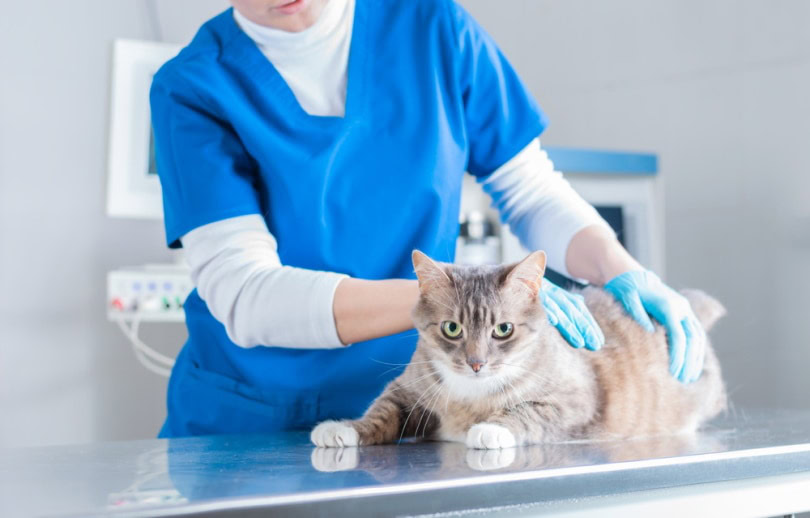
 Other Ways to Entertain Your Cat
Other Ways to Entertain Your Cat
If you think your cat is simply playing with their tail as a way to entertain themselves, there’s no need for concern. However, if the play seems excessive or you’d like to redirect their energy, there are a few strategies you can try to engage them in other activities.
But keep in mind that none of these methods are foolproof; sometimes their tail is simply too much fun to play with to consider stopping!
Get Them New Toys
If your cat is playing with their tail, it might be because they can’t find any other toys to play with! There are many cat toys out there, and the more options that you give your cat, the less often they’ll play with their tail. But keep in mind that cats can get bored of their old toys and want new ones, so this might be an expensive way to keep your cat away from their tail.
We're big fans of using cardboard as a material for cat scratchers, which is why it's no surprise that our favorite scratcher, the Hepper Hi-Lo Cat Scratcher, is made with cardboard. With a durable, sturdy, and modern-looking birch plywood frame, this scratcher is designed to make both cats and their hoomans happy. You can set it up in three different ways, too, to keep your cat fit and entertained. Click here to learn more.
At PangoVet, we've admired Hepper for many years, and decided to take a controlling ownership interest so that we could benefit from the outstanding designs of this cool cat company!
Spend More Time With Them
Your cat isn’t playing with their tail just because you aren’t spending enough time with them, but the less time that you give them to be bored, the less likely that they’ll play with their tail. If you’re playing with your cat, they’re not bored, so they shouldn’t play with their tail.
But keep in mind that if you start playing with them every time they play with their tail, they might start to associate playing with their tail as a signal that you will play with them.
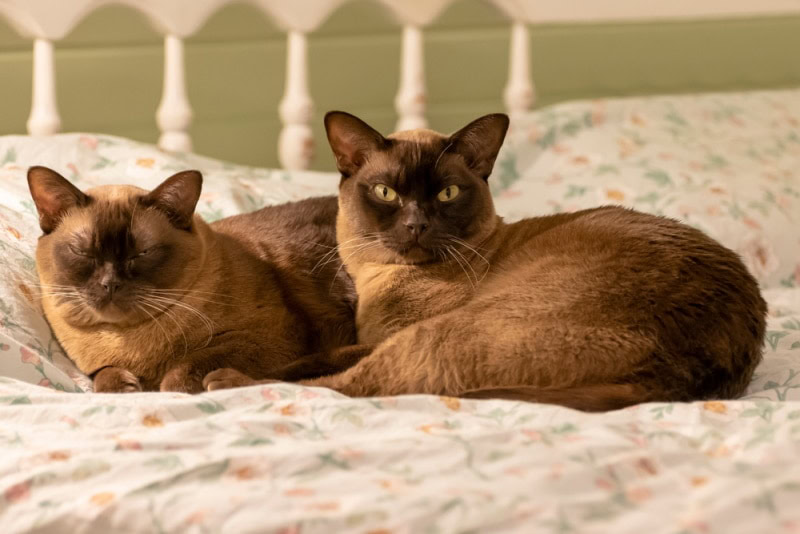

Final Thoughts
The next time that you see your cat playing with their tail, take a moment to consider why. While it’s not the most typical behavior for an adult cat, it can still be perfectly normal. In most cases, there’s no need to worry unless the skin or hair on the tail or its base appears abnormal, or if your cat starts chewing or over-grooming it. By understanding the possible reasons, you’ll be better prepared to know when it’s simply play and when it might be time to take a closer look.
If you don’t like it, you can try to distract them with something else, but it’s ultimately not that big of a deal if they just like playing with their tail!
Featured Image Credit: CarruthersCat, Shutterstock
